Microinverters: what are they? What is the difference between other types of inverters? In this article, we’ll answer all those questions, examining their pros and cons, how they work, and when they might be the right choice for your solar setup.

Functions of a photovoltaic inverter
To begin with, let’s remember the functions of an inverter. First of all, the most important function is to convert the direct current coming from the photovoltaic panels into alternating current so that it can be used in the home.
The second function is also very important and it is about getting the most out of the photovoltaic panels and this is done with MPPT tracking. In other words, the inverter makes the solar panel work at the point where it can get the most power.
A third function is the monitoring of the photovoltaic installation. This is a very interesting aspect. What does this mean? Through this function, we can know, for example, how much energy it has generated during the last x hours, what the current is or what the voltage is. The good thing is that almost all inverters from relatively well-known brands already have their web platform where you can connect and see all the information. This information is very helpful for detecting early failures.
Finally, another advantage is that it allows for control and management of the plant.
What is a Microinverter?
A microinverter is a type of solar inverter that you can install on each solar panel. This is the opposite of a traditional string inverter, which connects to multiple panels at once. Microinverters are designed to handle the conversion of DC to AC power right at the panel level. So, they allow for more detailed control over energy production and efficiency.
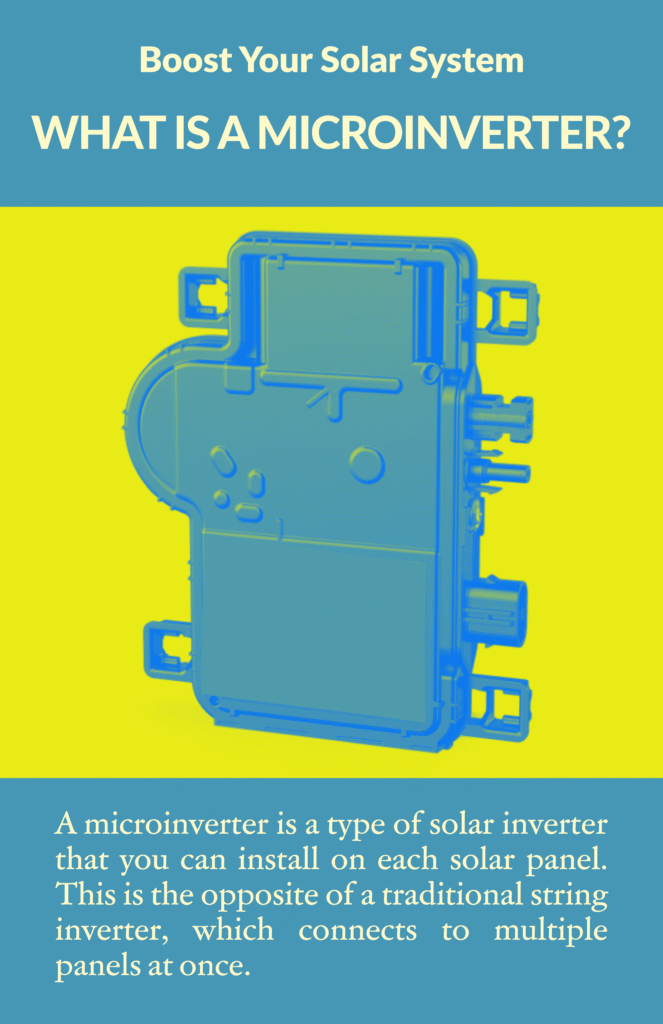
How Do They Work?
Microinverters convert the direct current (DC) produced by each solar panel into alternating current (AC) that can be used by your home or sent back to the grid. Unlike traditional string inverters, which tie multiple panels together and convert the combined output, microinverters are attached to individual panels. This means that each panel operates independently. So, if one panel’s output is reduced (because of shading or damage), it doesn’t affect the performance of the rest of the system.
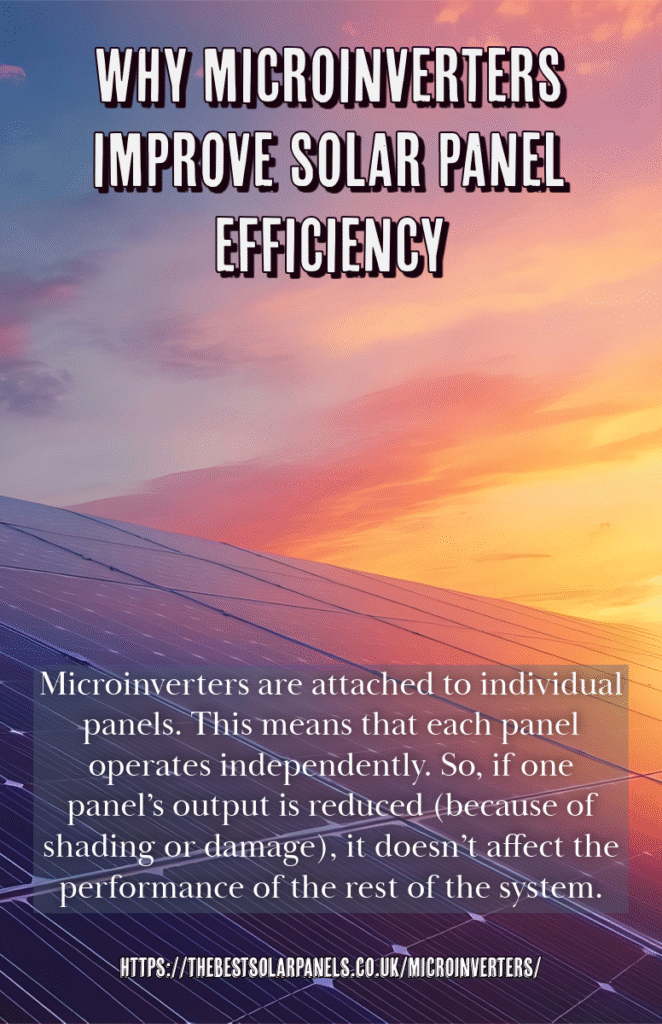
Pros of Microinverters
Versatility
One of the features of microinverters is that they are connected to the photovoltaic panel individually. So, the microinverter will always look for the MPP, which is the maximum power point of that photovoltaic panel.
Traditional Installations
In traditional installations, it is normal to have 6, 7, 8 or 10 photovoltaic panels connected in the same string. However, that inverter will manage the maximum power point of the entire string jointly. So, to avoid operating losses (technically known as mismatch losses), those photovoltaic panels have to all be the same.
In other words, they have to be of the same power, the same brand and the same model. Also, they have to match voltage and current for the losses to be as low as possible. So, in traditional installations, you cannot mix panels of different types.
However, when you use microinverters, each microinverter will manage the photovoltaic panel individually. So, the mismatch losses we mentioned before will not occur. And you will not have the limitation of always having to install the same photovoltaic panel.
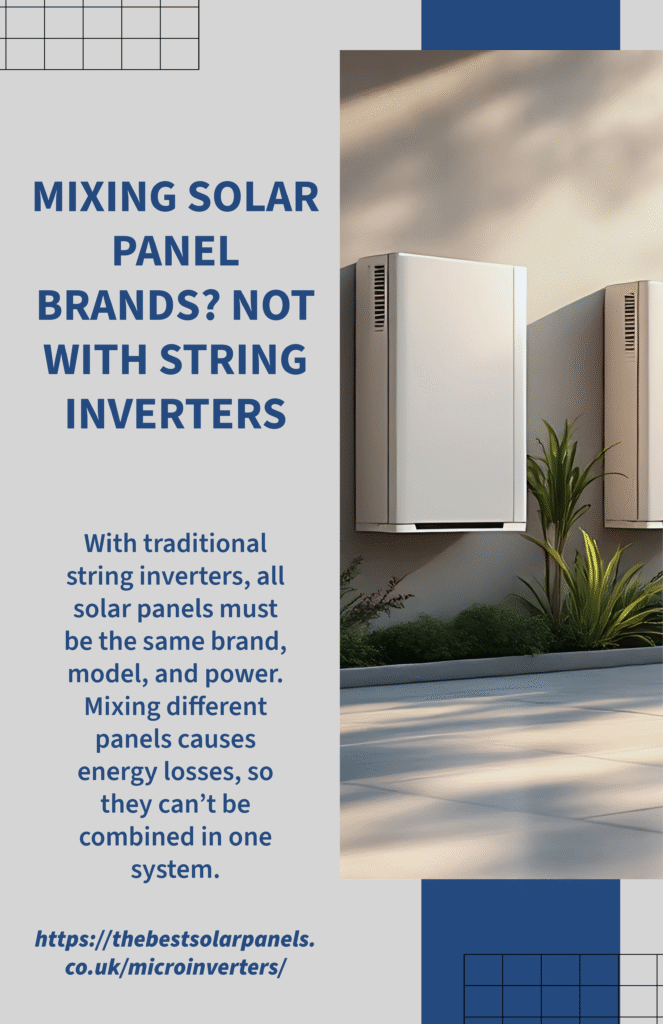
Degradation Over Time
And this may seem strange to you, because you may think: “Hey, I am going to buy the photovoltaic installation and I am going to buy 10 exactly the same panels.” True, this is normal. However, over the years, those photovoltaic panels will not all work in the same way.
For example, to give you an idea, it is as if you and your partner buy the same mobile phone. It happens that on day 1 that mobile phone normally works the same, that it works the same fast, that the camera works the same. However, after two years, perhaps the battery of one mobile phone is much more deteriorated. The other works better; the camera of one does not work better, and the camera works worse. That is, they degrade differently, more or less the same, but in a different way.
The same thing happens with photovoltaic panels. If you have a photovoltaic installation of 10 panels after 15 years, not all of them will behave the same. And not all of the electrical characteristics of those photovoltaic panels will be the same. So, you have a certain risk of having mismatch losses
Well, if you had initially made a photovoltaic installation with microinverters, where each microinverter is connected to a photovoltaic panel, you would not have that risk. Each solar panel will, at all times during its useful life, operate at its maximum power point. And you will not have mismatch losses.
Finally, using microinverters will allow you to mix different types of panels and orientations.
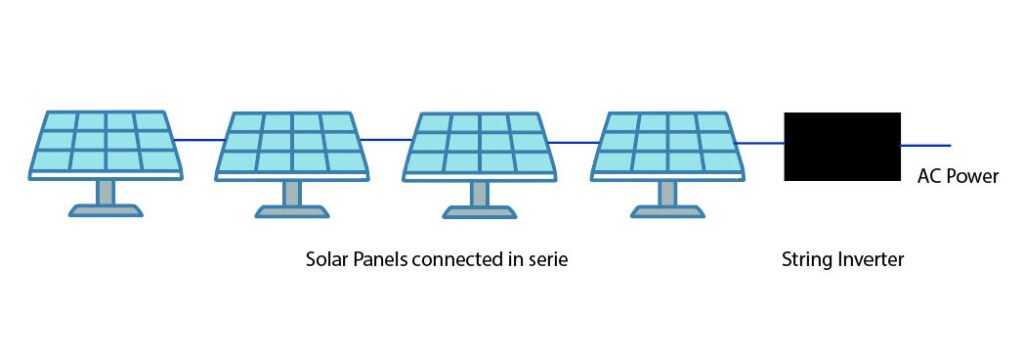
Expanding your Photovoltaic Installation
Let’s say you have installed a solar system in your home. And it turns out that your energy consumption increases over time because you may have children, consume more energy or buy an electric car, which means you need more electricity. So, you decide to expand your photovoltaic installation to cover these new consumptions.
Challenges with Traditional Installations
However, in 5 years the photovoltaic panels sold will be very different from the photovoltaic panels sold today. So, as the years go by, it will be very difficult for you to get exactly the same model. Mixing that new panel with the old panel will not be positive for the photovoltaic installation, mainly because of mismatch losses. So, expanding a traditional installation is really very complex.
Inverter Limitations in Expansion
On the other hand, when expanding your solar installation, the old inverter will likely become tiny. And you will need to buy a new one. So you will have to buy a larger inverter that is capable of connecting to all the photovoltaic panels. In short, expanding a solar system is not that simple. However, this doesn’t occur when you use microinverter technology.
You had a photovoltaic panel connected to a microinverter, another photovoltaic panel to another microinverter… And in this way, you had a system with autonomous mini installations, each photovoltaic panel with its microinverter. Now year 5 has arrived, your energy consumption has increased and you want to expand the photovoltaic installation. So, you directly buy four new photovoltaic panels of the technology that is available today, each one with its microinverter.
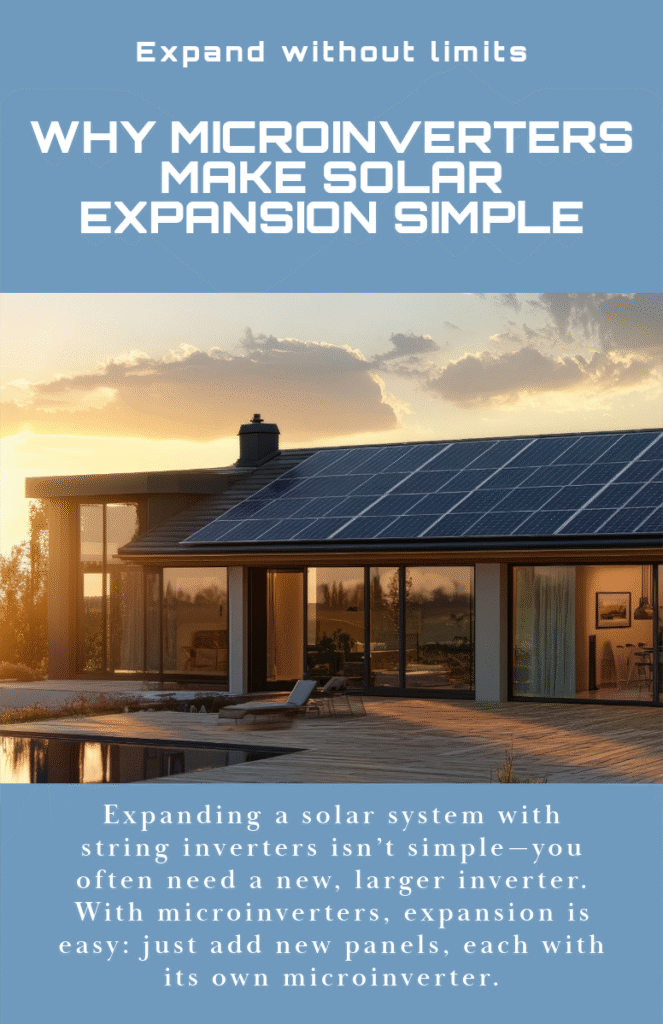
Maintaining System Performance
In this way, you will be able to have a larger system, with greater power, of greater size, without having to replace old inverters. And thus you will avoid losses caused by mixing photovoltaic panels of different technologies. So, you will have a practically new system with technology that will continue to manage it individually. And that will continue to ensure very good performance.
In the case of having a traditional installation, when you want to expand the system, you could choose to add more photovoltaic panels, each one with its respective microinverter.
KEY INFO
Monitoring
This is something that you may not be interested in at first. But it is something very positive, especially when it comes to maintenance. When you have photovoltaic panels with microinverters, you ensure that you have a photovoltaic installation that is fully monitorable at the panel level. In this way, you will know how much is being produced in photovoltaic panel number one and panel number two. And so on with each of the panels you have in the installation.
This way, you will be able to detect very quickly if a solar panel fails. Or if a photovoltaic panel for some reason is working at a point other than the MPPT point. In short, you will be able to have a much safer and fail-safe installation. So, you will be monitoring each panel individually. And this is an advantage that you may not consider today. But surely after the inverter fails you several times or having problems with the panels, you will see that it is an interesting option. That’s because it will allow you to detect problems very quickly and easily.
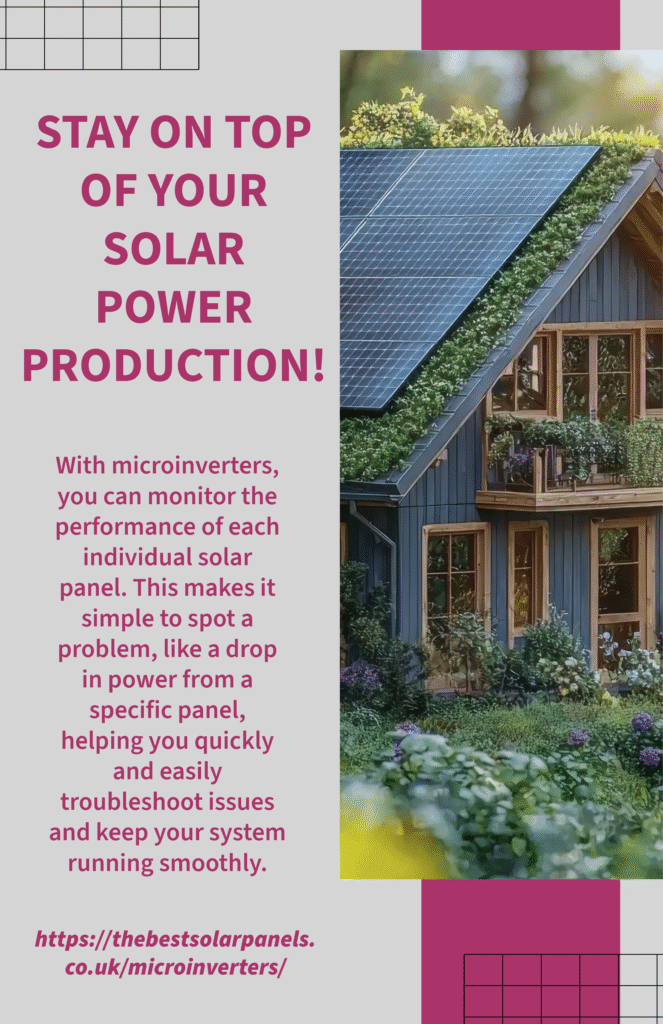
Failure Reduction
By using microinverters, you are monitoring each part of the photovoltaic installation in a compartmentalized way. As a result, you will not only detect faults earlier and fix them sooner. Also, you will be able to isolate them. In other words, if one panel fails, you only lose the production of the photovoltaic panel associated with that microinverter.
For example, let’s say you have a 4-kilowatt installation made up of 10 solar panels. And each solar panel has its own microinverter. If suddenly one day some microinverters fail, you would only lose 400 watts. But you would still have 3.6 kilowatts available because the rest of the microinverters would be working. This is really something very interesting because it will be very difficult for the entire installation to collapse. At most, you will lose one microinverter or two microinverters, but nothing more. And you will continue to have enough energy to at least supply electricity to your home’s basic needs.
Longer Warranty
Another very interesting advantage is that microinverters usually offer longer warranties than string inverters. So, manufacturers are giving you a certain assurance that the microinverter is less likely to break down.
Better Performance in Shadows
When we talk about residential self-consumption installations, shadows are often a problem that appears quite often. We have to take into account that residential self-consumption photovoltaic panels are usually installed on the roof of the house. And many times there may be nearby trees or other elements producing shadows on the photovoltaic installation. Well, when we have a conventional photovoltaic installation with 10 solar panels connected to the same string inverter, if one or two photovoltaic panels are shaded, we will have problems throughout the photovoltaic installation. As a result, we will have many production losses. Suppose that instead of having 10 panels with a string inverter, we have an installation based on 10 photovoltaic panels, each with its microinverter. Then, we will only lose the production associated with the shaded photovoltaic panel.
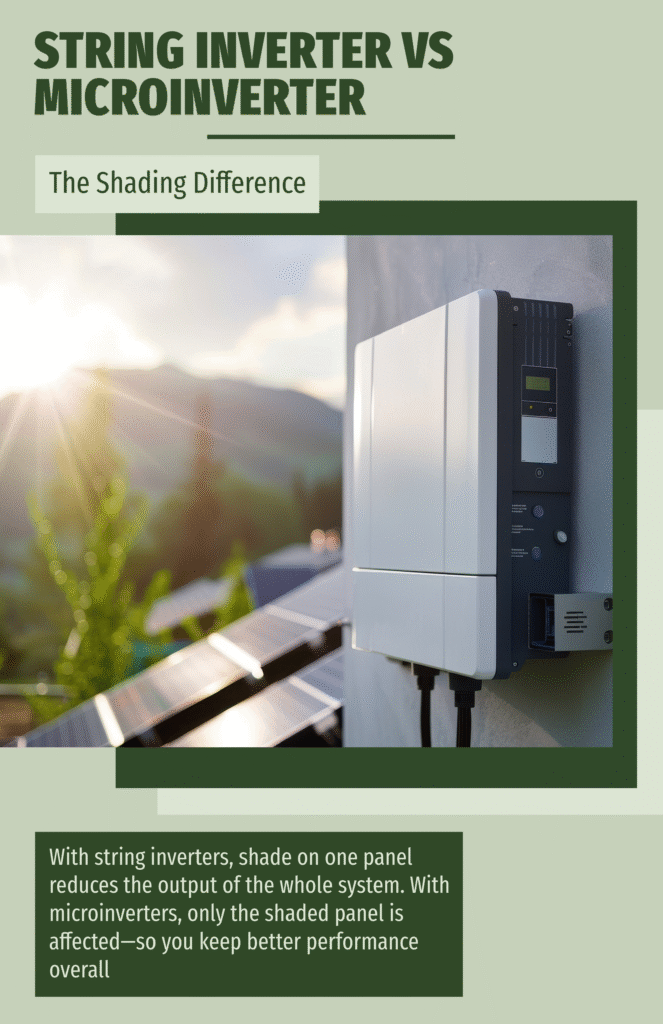
Better Performance in the Face of Dirt
Having microinverters will not only make the panel installation perform better in shadowing. So, it will also do so in case of dirt on the photovoltaic panels. And it may be that some solar panels are dirtier than others. For example, it is common for a bird to dirty one of the panels. Or for a branch to have fallen on one of them. Well, when you have microinverters, you ensure that the loss of production will be tiny. At least the loss of production will be only at the level of the photovoltaic installation. This is very important and related to what we were saying before. If we evaluate this over a full year, the additional production that you will get by using microinverters is very high.
Safety
Another major benefit of microinverters is safety. Let me explain this. On one side of the microinverter, direct current (DC) enters. And on the other, the alternating current (AC) comes out. That means no DC cables are running through your house. If a fire were to occur, the cables leading into the house would always be de-energized.
However, with central inverters, if there’s an issue, DC can still enter the home. And if the sun is shining, the system won’t disconnect. So, microinverters offer slightly more safety in case of an accident. To sum up, in case of a fire or other emergency, DC will never reach the inside of your home.
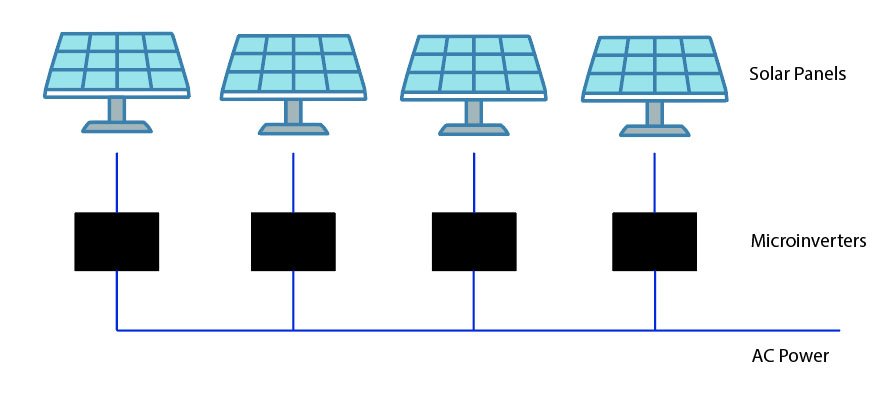
Summary of advantages
- As each solar panel operates independently, if one panel underperforms, because of damage or shading, it does not impact the output of the other panels.
- With no high-voltage DC power running between panels, safety issues are highly reduced.
- Installation, fault detection, and maintenance are also considerably easier.
- Expanding your grid-tie system in the future is as straightforward as your budget allows.
- More flexible solar panel installation. So, you can mount panels in different locations and orientations.
Disadvantages of Microinverters
The main disadvantage is the cost. However, you should keep in mind that photovoltaic installations are designed to last at least 25 years. So, an increase in investment in year zero of 800 £ or 1600 £ will have a minimal impact on the savings you will have over the 25 years. And you will pay for it in just a few years. So, although it may be a disadvantage at first, the increase in the initial cost of the photovoltaic installation because of the use of microinverters will be a highly recommended option in the long term.
When You Should Choose Microinverters
Microinverters are an excellent choice if your solar installation will face partial shading during the day. Also, if you need to place your panels in different orientations. Besides, they are ideal for smaller systems or if you are looking for the flexibility to expand in the future. On the other hand, microinverters offer more detailed data than string inverters. So, they are perfect if you want to monitor the performance of each panel closely.
How Do Microinverters Stack Up Against Other Solar Inverter Options?
When comparing microinverters to other solar inverter types—such as string inverters and power optimisers—you should consider several factors. String inverters are more cost-effective but less efficient in shaded or varied conditions. Power optimisers, which are often paired with string inverters, improve individual panel performance. However, they still rely on a central inverter for conversion. On the other hand, microinverters combine the benefits of independent panel performance with on-panel AC conversion. So, they offer the best efficiency and monitoring capabilities at a higher cost.
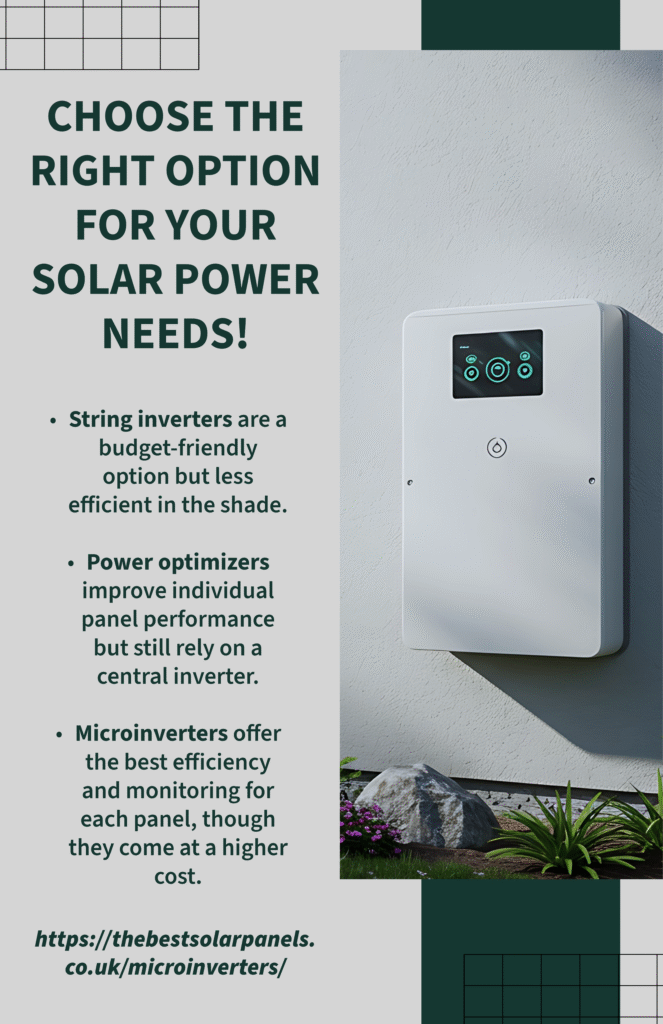
Is a Microinverter Better Than an Inverter?
In many cases, yes. Microinverters are superior to string inverters for efficiency, especially in installations with shading or different panel orientations. However, string inverters paired with power optimizers may be a more cost-effective solution for larger, unshaded installations.
What is the Working Principle of a Microinverter?
Microinverters convert the DC electricity produced by each solar panel into AC electricity right at the panel level. This decentralised approach means that each panel functions independently. So, performance issues in one panel do not affect the overall system. This is a great advantage over traditional string inverters, which convert the output from multiple panels at the same time.
Why Are Microinverters So Expensive?
Microinverters are more expensive because each panel requires its own inverter. So, this increases material costs and installation. Also, microinverters offer advanced monitoring and efficiency features. However, they often pay for themselves over time through increased energy production and reduced maintenance.
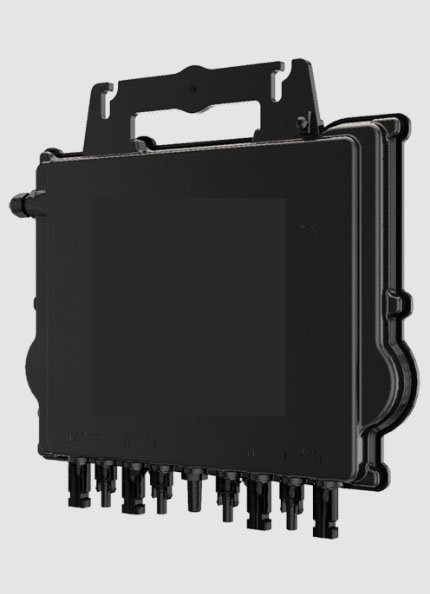
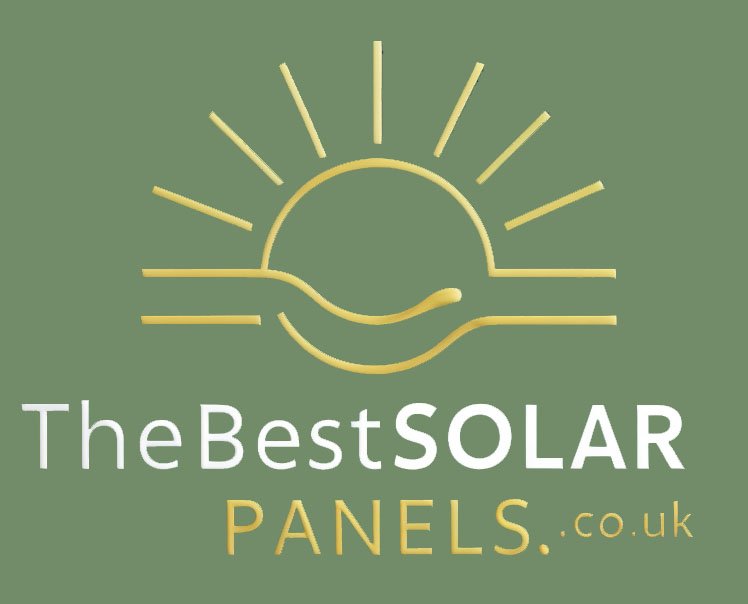
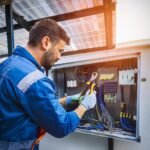

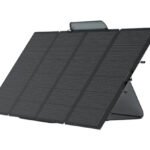
Leave a Reply